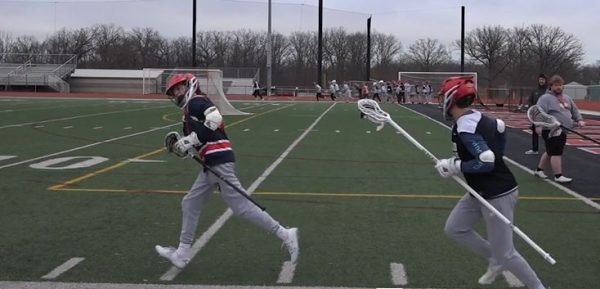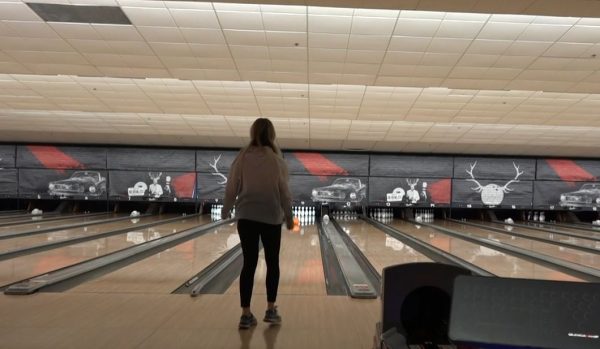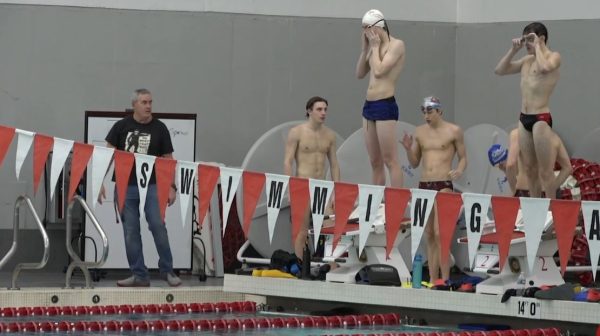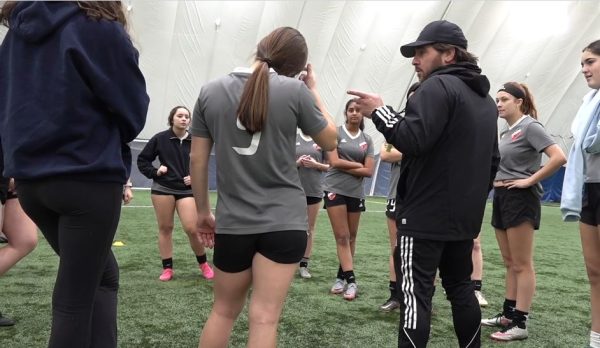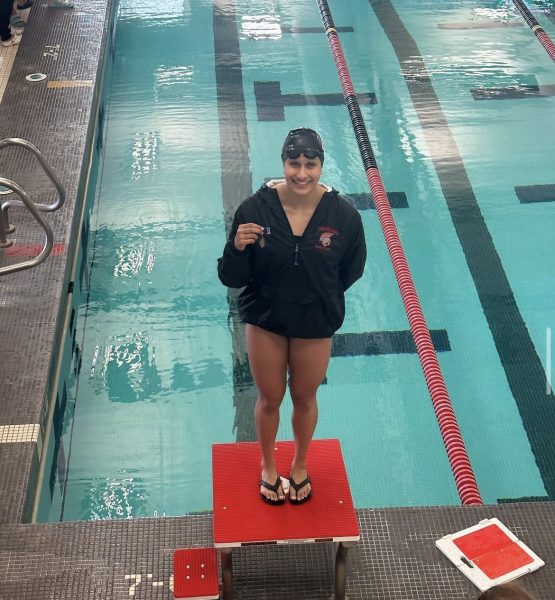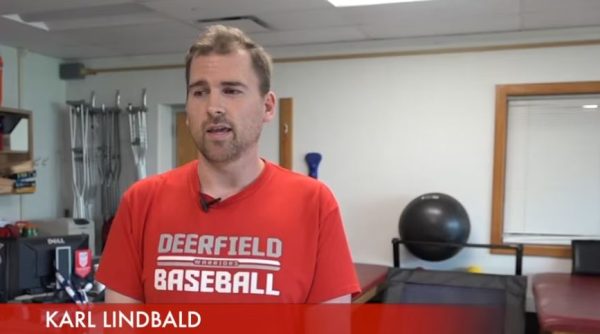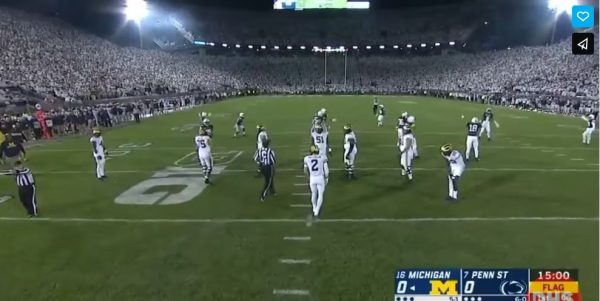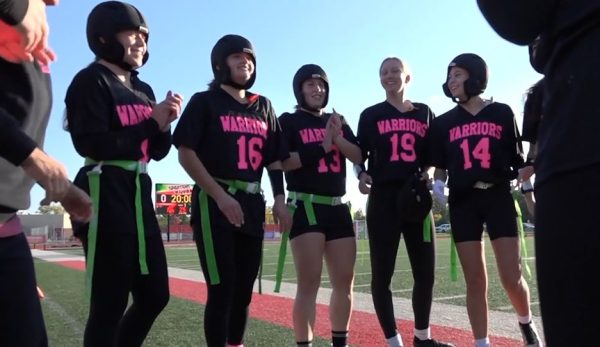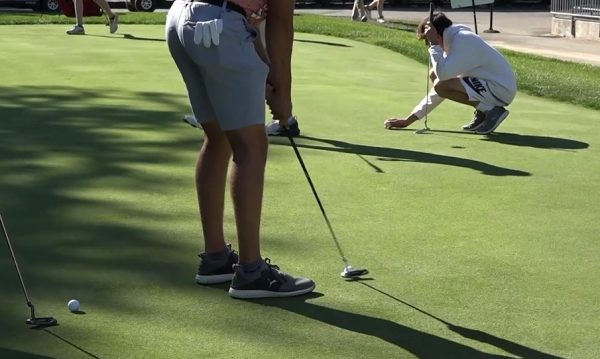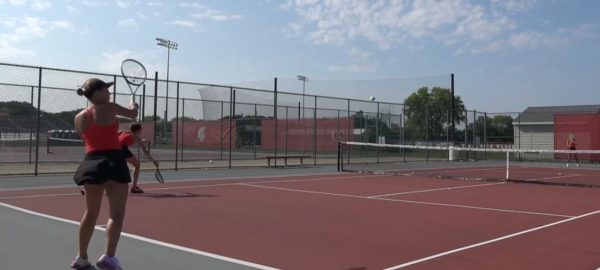How COVID-19 Has Impacted Student Athletes
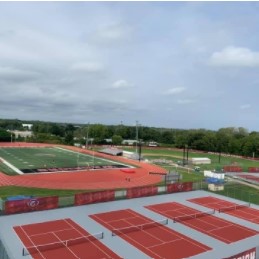
Image courtesy of District 113
April 14, 2021
COVID-19 has impacted the lives of all people, especially student athletes. A huge change the virus influenced was the interruption of many spring sports’ seasons last March. Some students had to drop everything―some mid-season―and continue their own personal training safe in the comfort of their own home. There were no more coaches, teammates, or games. Luckily, as the year has progressed, the rate of COVID cases has slowed enough for the IHSA to allow for some more participation in high school athletics, but that does not equate to normality. There are still challenges students athletes face now as a result of this pandemic that took us all by surprise.
Right now, as the pandemic has improved, some restrictions have been lifted. One of the many sports at DHS able to start up again was badminton, since it is considered a low-risk sport due to the players being able to easily distance. There are still major precautions that have to be put in place to make athletics safe. Students at DHS have to get tested for COVID-19 twice a week, wear masks at all times, and pre-screen before practice.
Junior Ina Pan shared with me how life as a varsity badminton player at DHS has evolved due to all the new precautions that have been put in place. She noted how due to the mask mandate there have been more frequent water breaks. Badminton is a sport where one has to frequently move across the court, so as a result, students are out of breath more often when training on footwork and conditioning. COVID-19 put a stop to their training, and not all students were motivated to continue putting in the work outside of school. A lot of the endurance built up over the year slowly dissipated, so now getting back into the season with masks being necessary. “It’s really hard to breathe at times, especially during games when matched with an opponent of equal or greater skill than you,” Ina admitted.
Another huge aspect that was lost due to the pandemic was physical human connection. Lack of pasta parties and team building events however has not brought the team down completely as they look for other ways to remain connected despite the challenges of COVID-19. According to Ina, instead of sharing snacks together, each person brings their own, and since social distancing is a must badminton players have replaced high fives with teammates with the clicking of rackets. This situation targets doubles players even more so because the connection needed to be felt with one’s partner might be harder to obtain.
Thankfully, as ongoing COVID-19 tests take place at the school, no one on the badminton team has contracted the virus.
Team captains of sports have also faced similar challenges with connection this year. Stone Brody, one of the Boys Track and Field team captains, mentioned the difficulty of “getting to know everyone, across all grade levels and events”. He explained that, “This year [since] the track and field team lost their indoor season, it takes all that time away, and with contact days being so spread out and different events in different areas, it has been really tough to get to know other event groups.” This is a challenge that other team captains likely resonate with. Despite that, captains and athletes alike try their best to gain relationships with as many people as they can.
This year has been especially hard on seniors who have found themselves in their last high school season of the sport they play. As a track and field shot put and discus athlete, Stone’s season was terminated early last year, and he has had to stay creative to make the most of his remaining time as a high school athlete. Stone recounted that right after school shut down, he “gathered around equipment, built a toe board out of wood, had to buy a shot put” to continue his training. In order to stay in shape, Stone frequently recorded videos of himself throwing to send to his coaches, Coach Foerch and Coach Gasper, while constantly looking for open fields and parks to train safely. He noted that although it was hard and inconvenient at times, in order to stay motivated “he kept his mind focused on the end goal” and “what will come out if [he] put in all [the] time”.
Like many other athletes, Stone wanted to make the most out of his last year at DHS and leave with no regrets, so wearing masks and COVID-19 testing twice a week, however inconvenient, was worth it. The hardest thing though has been lack of school competitions due to the pandemic. COVID-19 restrictions in school have led serious athletes to look outside of school for opportunities. In order to continue competing in shot put and discus, Stone Brody mapped out a detailed process that involves scouting for competitions, paying up to 40 or more dollars in application fees, and driving anywhere from an hour to an hour and fifteen minutes to meeting sites. As a student, he has “to plan everything for [himself]” and “look at all of [his] schedules ahead of time to make time” for the competitions. The work, while seemingly overwhelming, is the price some students pay to be prepared for their seasons after the months of lost time COVID-19 has brought. Not all athletes have the time or means to be able to attend sporting competitions outside of school, so this option, while great for some, remains available for select students able to keep up and meet all the requirements.
Sports have always been a way for students to release stress. Exercise and other physical activity produce endorphins or chemicals in the brain that reduce stress and anxiety. Staying active helps mental health. We are still a long way from going back to normal, whether athletically or otherwise. For some sports, such as badminton and track and field, the season has extended allowing students to make up for the time they missed and continue being active during the school year.
Hopefully, over time it will get easier to adjust to this new reality, and masks and social distancing will be second nature until we are back to normal. In the meantime, we can still be thankful for the process in place that allows students to be able to do what they love.

